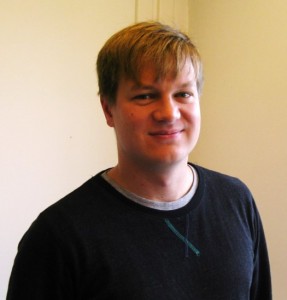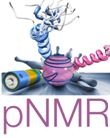 I am from Essen, Germany. I studied Chemical Biology at the TU Dortmund where the courses cover mostly chemistry but also biochemistry and molecular biology. From my 3rd year I continuously participated in the group of Prof. Martin Engelhard at the Max Plank Institute for molecular Physiology in Dortmund. During the Bachelor degree project I worked on the production of truncated analogues of the archeal light receptor complex (SRII). Later during my Masters project I worked on the use of lipid nanodiscs as a model membrane to analyze the SRII receptor by biophysical methods. I received my Master degree in 2009 and joined the research group of Prof. Christiane Ritter at the Helmholtz Centre for Infection Research (Braunschweig, Germany) in the same year to work on my PhD. In my project we used solid state NMR spectroscopy to investigate the structure of a functional amyloid. Furthermore I exploited segmental isotope labeling of amyloid fibrils to obtain well resolved NMR spectra for resonance assignments and the detection of distance constraints. I obtained my PhD in 2013. During the pNMR project I am appointed as experienced researcher by Giotto Biotech in Florence.
I am from Essen, Germany. I studied Chemical Biology at the TU Dortmund where the courses cover mostly chemistry but also biochemistry and molecular biology. From my 3rd year I continuously participated in the group of Prof. Martin Engelhard at the Max Plank Institute for molecular Physiology in Dortmund. During the Bachelor degree project I worked on the production of truncated analogues of the archeal light receptor complex (SRII). Later during my Masters project I worked on the use of lipid nanodiscs as a model membrane to analyze the SRII receptor by biophysical methods. I received my Master degree in 2009 and joined the research group of Prof. Christiane Ritter at the Helmholtz Centre for Infection Research (Braunschweig, Germany) in the same year to work on my PhD. In my project we used solid state NMR spectroscopy to investigate the structure of a functional amyloid. Furthermore I exploited segmental isotope labeling of amyloid fibrils to obtain well resolved NMR spectra for resonance assignments and the detection of distance constraints. I obtained my PhD in 2013. During the pNMR project I am appointed as experienced researcher by Giotto Biotech in Florence.
| Home Country | Germany |
| Project Topic | Paramagnetic effects for metalloprotein structures in solution and in crystals |
| Project Description | Recent advances in solid state NMR methodology permit the measurement of paramagnetic effects in metalloproteins. Appropriate targets are either proteins that feature incorporated metal ions or proteins that are modified with a paramagnetic tag. My main objectives are the production of isotopically labeled metalloproteins and their preparation for NMR measurements. This involves the optimization of protocols for protein production and metal substitution strategies as well as paramagnetic tagging of proteins. Measurements of pseudocontact shifts through solid state NMR and of residual dipolar couplings through NMR in solution provide an assessment of the quality of the produced paramagnetic protein. Suitable protein samples will be further analyzed with special focus on their paramagnetic properties which will provide insight into the electronic structure, oxidation states and eventually catalytic mechanisms of the protein. |
| Project Home | Giotto Biotech |
| Supervisor | Claudio Luchinat |
| Starting Date | September 2013 |
| Publications | E. Ravera, T. Schubeis, T. Martelli, M. Fragai, G. Parigi, C. Luchinat, “NMR of sedimented, fibrillized, silica-entrapped and microcrystalline (metallo)proteins”, J. Magn. Reson.in press |
| Meetings | pNMR Applied Training Course, September 2013, Lyon, France Title: Solid-state NMR of materials and proteins Role: participant pNMR Workshop, September 2013, Chamonix, France Title: Multidisciplinary Workshop #1, joint with Bruker pre-Alpine Conference Role: participant EMBO Training Course, and SU Applied Training Course, July 2014, Florence, Italy Title: Solution and Solid-state NMR of Paramagnetic Molecules Role: participant SU Applied Training Course, July 2014, Florence, Italy Title: NMR Relaxation Theory Role: participant pNMR Applied Training, June 2015, Berlin, Germany Title: Introduction to practical pNMR shift calculations Role: participant pNMR Complementary Skills Training, July 2015, Prague, CZ Title: Personal Skills, conference presentation and Communication Role: participant pNMR Workshop 3, Prague, CZ Title: pNMR : from rags to riches, Challenges and potentials of NMR on paramagnetic molecules, Role: speaker |
| Secondments | CNRS Lyon, April-July 2014, TU Berlin, October-December 2014 |
